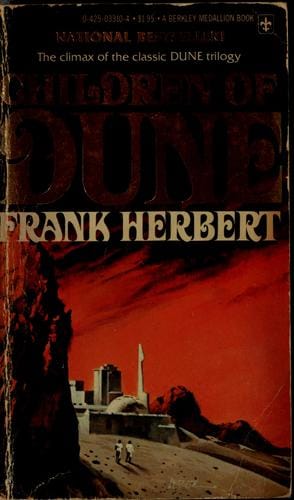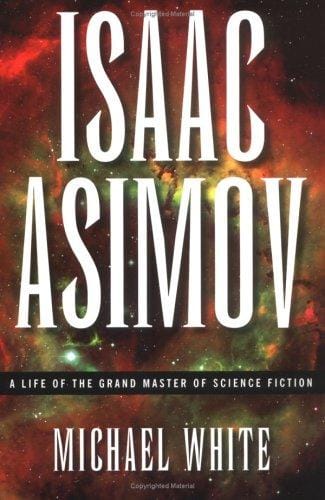Children of Dune: Plot, Themes, and Legacy
Explore the plot, themes, characters, and cultural legacy of Frank Herbert’s Children of Dune, the pivotal third novel in the iconic Dune saga.

Introduction
Children of Dune, first published in 1976, is the third novel in Frank Herbert’s monumental science-fiction series. Set nine years after Paul Atreides vanished into the desert, the book follows his twin heirs, Leto II and Ghanima, as they struggle to survive palace intrigue, ecological upheaval, and the irresistible pull of their genetic memories. Herbert fuses political thriller, ecological warning, and philosophical meditation, crafting a story that expands the already vast scope of the Dune universe. This article explores the novel’s plot, characters, themes, and enduring cultural impact.
Plot Overview
As the story opens, the desert planet Arrakis is blooming with new greenery, thanks to the late Emperor Paul Muad’Dib’s terraforming vision. However, that transformation threatens the life cycle of the giant sandworms that produce the spice melange, the substance upon which interstellar commerce, prescience, and power all depend. Paul’s sister, Alia, serves as Regent for the twins but slowly succumbs to possession by the ancestral consciousness of Baron Harkonnen. When rumors spread that Paul, now a blind prophet called The Preacher, has returned, the balance of power begins to shift.
Duke Leto II and Princess Ghanima must navigate conspiracies led by the rival House Corrino, religious extremists, and their increasingly unstable Aunt Alia. In a calculated gambit, Leto merges his body with sandtrout—immature sandworms—gaining near invulnerability and a vision of humanity’s future. His metamorphosis marks the genesis of the God Emperor he becomes in later novels. Ultimately, Leto defeats the conspirators, liberates Alia—who chooses death rather than continued possession—and secures a fragile peace that sets humanity on a course he calls the Golden Path.
Key Characters
Leto Atreides II
Precocious yet burdened by millennia of ancestral memories, Leto II embodies Herbert’s fascination with power and sacrifice. His decision to transform himself is both heroic and terrifying, illustrating the cost of true foresight.
Ghanima Atreides
Ghanima, often overshadowed by her brother, balances sharp political instincts with emotional depth. Her alliance with the Fremen warrior Farad’n Corrino shows her capacity for compromise and strategic thinking.
Alia Atreides
Once celebrated as the “Abomination” born with full consciousness, Alia’s tragic possession by the Baron Harkonnen delivers one of the saga’s finest psychological portraits, exploring the thin line between memory and identity.
The Preacher (Paul Muad’Dib)
Paul’s return as a blind wandering prophet critiques the religious cult that has grown around his legend. He seeks to correct the excesses of his own jihad, embodying Herbert’s warning about charismatic leaders.
Major Themes
Power and Responsibility
Children of Dune interrogates the ethics of wielding absolute power. Leto’s transformation grants him godlike abilities, but he accepts millennia of solitude and physical mutation to safeguard humanity from stagnation and extinction. Herbert suggests that true leadership demands painful personal sacrifice.
Ecology and Change
The greening of Arrakis is a double-edged sword. While it fulfills Fremen dreams of paradise, it imperils the spice cycle and their culture. Herbert underscores that well-intentioned environmental intervention can have catastrophic unintended consequences, a message more relevant today than ever.
Prescience and Free Will
Both Paul and Leto perceive countless futures. Herbert portrays prescience as a trap, limiting spontaneity and creativity. Leto’s Golden Path aims to force humanity into unpredictability, ensuring long-term survival by disrupting complacency.
World-Building and Setting
Herbert deepens the mythology of the Bene Gesserit Sisterhood, the Mentats, and the Orange Catholic Bible, weaving them into political chess moves across the Imperium. Arrakis itself evolves from an arid desert into an ecological patchwork of oases, dunes, and burgeoning forests. The tension between old Fremen traditions and new settlers mirrors real-world debates over modernization and cultural preservation.
Reception and Legacy
Upon release, Children of Dune became the first science-fiction hardcover to hit The New York Times bestseller list, cementing Herbert’s mainstream status. Critics praised its dense philosophical layers and intricate plotting, though some found its abstract dialogue challenging. Over the decades, scholars have cited the book’s ecological warnings and sociopolitical allegories in discussions ranging from climate change to religious extremism. Its influence extends beyond literature into music, video games, and policy debates about desertification and resource scarcity.
Adaptations
The novel was adapted as part of the 2003 Sci-Fi Channel miniseries “Frank Herbert’s Children of Dune,” starring James McAvoy as Leto II. While condensing complex material, the production earned praise for visualizing the twins’ relationship and the shifting landscapes of Arrakis. Elements from Children of Dune are expected to inform future cinematic installments following Denis Villeneuve’s acclaimed Dune films, especially if the franchise explores Leto’s reign and the Golden Path.
Why It Remains Essential Reading
Children of Dune is more than a bridge between Dune Messiah and God Emperor of Dune; it is a pivotal meditation on how societies evolve, how leaders confront destiny, and how ecosystems respond to intervention. Herbert combines suspenseful court politics with speculative science, inviting readers to wrestle with questions about fate, morality, and survival that resonate strongly in the twenty-first century.
Conclusion
By charting the tumultuous rise of Leto II and Ghanima, Children of Dune expands the mythic framework of the Dune saga while delivering a cautionary tale about ecological stewardship and the perils of absolute power. Frank Herbert’s intricate prose and visionary ideas continue to captivate new generations, ensuring that this third installment remains a cornerstone of science-fiction literature and a vital lens through which to examine our own world.



